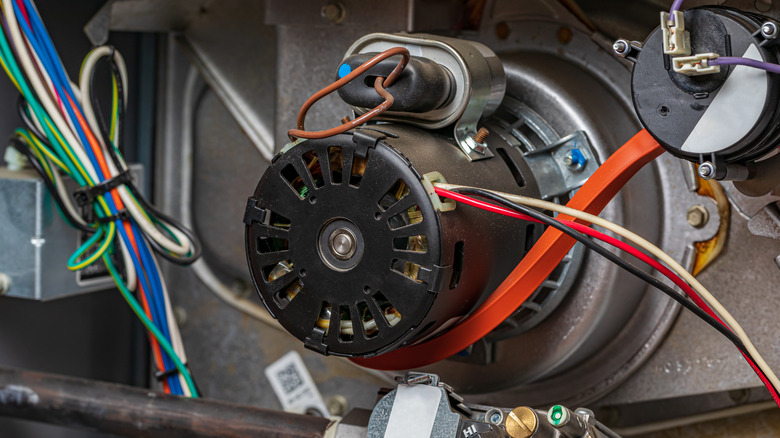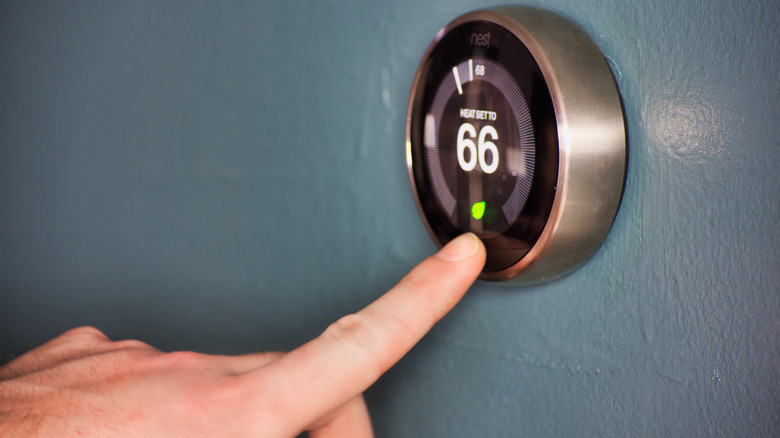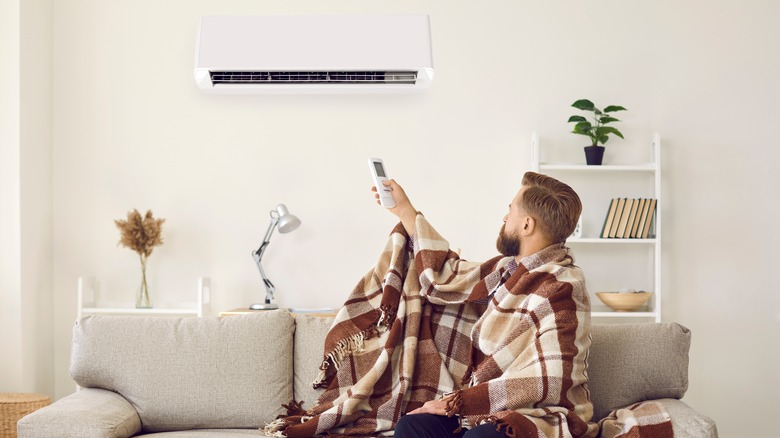How To Repair A Gas Furnace
Similar to any other appliance, a gas furnace can misbehave once in a while. The worst-case scenario is that it breaks down when you need it the most. Instead of bearing the winter chills while waiting on the furnace technician to arrive, perhaps you can troubleshoot the problems yourself and save yourself some money in the process.
According to Home Tips, the furnace is the heart of a heating system. Cold air from outside is drawn into the furnace through the air vents, which then passes through the air filters to be cleaned. It then heats up via a gas burner through a steel heat exchanger. Finally, the blower motor distributes this hot air equally around your home through the ductwork. Unfortunately, if any of these stages fail then the system will stop working correctly, however, correctly identifying the problem is the first step to getting your heating system up and running again.
Blower runs constantly
When your blower is constantly working, the resulting wear and tear between its parts will reduce the lifespan of the furnace. According to Home Tips, there are two possible diagnoses of this problem; one is a bad limit switch and the other may be from a faulty thermostat. When the temperature in the furnace becomes too high, the limit switch will trip and open the circuit. This will turn off the furnace and activate the blower to cool the furnace off. So if the limit switch is faulty, the circuit will remain open and the blower will continue to work (via Central Heating & Air Conditioning).
Before you conclude it is a faulty limiter, The Spruce suggests you check if the thermostat switch is set to the fan setting. If it is, this will cause the fan to run permanently, ensure that it is turned off or set on auto. If this problem persists, you will need to seek professional help to fix the faulty limit switch.
Faulty thermostat
A faulty thermostat can be the root of several problems associated with a gas furnace, including improper heating, fluctuating temperatures, and constantly running blowers. Whenever a problem arises, save yourself some time and check the thermostat before checking other components of the furnace. If the thermostat is run by batteries, Central Heating & Air Conditioning recommends checking if they are dead. Low-powered batteries can confuse the furnace and cause errors.
Another problem that can confuse your gas furnace is installing the wrong type of thermostat. The Spruce explains that there are three types of thermostats: line voltage, millivolt, and low voltage. If you set a low voltage thermostat for a gas furnace that requires a line voltage, then your furnace will underheat or overheat, therefore, do make sure you're getting the right thermostat whenever there is a need for replacement. You can check the manufacturer's guide before purchasing a new one.
Noisy furnace or ductwork
Your furnace and ducting are made predominantly of metal and so they readily conduct sound and vibration. But, when these sounds become excessive or irregular, there might be a problem inside your gas furnace. Home Tips notes that there are several possible noises you would hear depending on the nature of the malfunction.
One is a popping sound, which is usually created when the ductwork expands due to heat. After a while, the blower is activated to cool the furnace down, and this ductwork expansion then reverses. Another cause could simply be a loose flap of metal hitting against something. To solve this problem, identify the source of the noise by inspecting the ductwork, then manipulate the metal so that it stops moving. Central Heating & Air Conditioning warns that with a more serious issue, you may experience a grinding noise as well. If this is the case, immediately dial the furnace technicians for a closer look.
Insufficient or no heat
If your gas furnace is running but you cannot feel any heat, before you call a professional, you can troubleshoot the problem with these steps by The Spruce. Check the heat registers throughout the house and make sure they are open. A thermostat malfunction may also be the possible source of the problem, so ensure the thermostat is set to heat and the fan switch is set to auto or on, then raise the temperature by 5 degrees to check if it is heating. Lastly, ensure that your furnace is receiving enough power to function properly.
Paragon Home Comfort Solutions also suggests checking for obstructions between the airflow and the vents. This could be fabric, curtains, drapes, chairs, or other furniture. Dirty or blocked air filters could also be the source of the problem; if the filters are blocked with ice or dirt, less air is drawn through the vents and therefore can overwork your gas furnace to meet the set temperature, which can reduce the lifespan of your furnace in the long run, notes Home Tips.
Heating turns on and off too frequently
When a gas furnace cycles on and off rapidly and frequently, a lot of energy is being expended (and a lot of money, too). Additionally, wear and tear reduces the durability of the gas furnace, explains The Spruce. Commonly known as short cycling, the first diagnosis may be dirty, worn out, or clogged air filters. This is thankfully an easy fix. If you haven't replaced your filters in a long time, simply unscrew the old ones and replace them with the correct brand.
If your air filters are new then you can also try cleaning all the nasty stuff in between the air filter parts and do the same for the gas furnace's air vents, suggests Central Heating & Air Conditioning. If, however, the problems persist then it might be something deeper than a home DIY job. The blower motor may be malfunctioning or the blower belt could be loose. It might also be an electrical problem. Either way, it's time to call the furnace technician to take a closer look.





